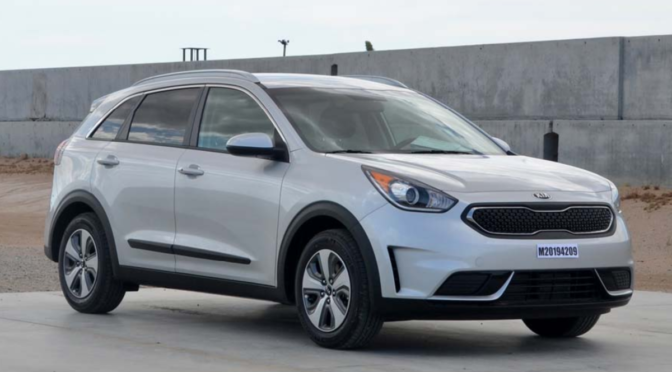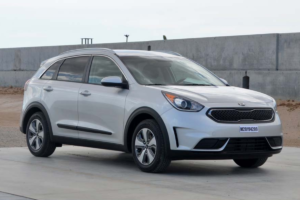
It’s been three weeks since the Calabasas helicopter crash that killed Kobe Bryant and eight additional occupants of a 1991 Sikorsky S-76B helicopter. Out of respect to the deceased, here is the rest of the manifest:
“..his 13-year-old daughter Gianna; her teammates, 14-year-old Alyssa Altobelli and 13-year old Payton Chester, and their parents Keri and John Altobelli (head baseball coach at Orange Coast College) and Sarah Chester; basketball assistant coach Christina Mauser; and pilot Ara Zobayan”
I focus nearly exclusively on auto trauma, but that’s simply because it’s my area of expertise. It’s what I’ve spent the most time learning about, so it’s what I’m most qualified to talk about. With that in mind, the principles behind safe road use (individual behavior, vehicular safety, and societal infrastructure) apply in a wide range of disciplines, including in aviation safety (which we’ll briefly discuss today), water safety (many adults and children die each year due to drownings related to boating, swimming, or cold water immersions), fire safety (again, there are many deaths related to home fires each year), and elsewhere. Today, we’ll focus on air safety. I don’t have the background to extensively discuss the degree to which pilot behaviors, the safety of the S-76B, or the US’ aviation infrastructure may have led to the unfortunate outcome that claimed 9 lives on January 26th, 2020. However, as noted above, I do believe we can glean information through the application of best practices in one field to another, if we work from a sufficiently low, base level. After all, everything is connected if you see things broadly (or simply) enough. With that said, we’ll start with a saying I’m fond of using with my wife:
Expertise is the Application of Experience
I thought of this some time ago before heading off to bed. I’m surely not the first person to have come up with the idea; there are very few truly novel ideas on a planet with 7 billion people as capable as you or I, but simply differences in opportunities afforded to us to make our ideas known. With that said, to me, it simply means that when you’re qualified as an expert, it means either you or others perceive you to have much more knowledge than the average person about something. It doesn’t really matter what it is; someone who has a lot of experience fiddling around with teeth is called a dentist, for example. I happen to have spent a fair amount of my free time learning about road safety. The point is that expertise, or being an expert, simply means you’ve got a lot of experience with something. To quote Becky Bailey, you can’t teach what you don’t know. And you can’t claim (or more importantly, use) expertise if you lack experience.
In aviation, expertise (applied experience) is largely measured in flight hours
This is why in aviation, pilots are rated by their flight hours. You can’t obtain an airline transport pilot certificate in the United States (what you need to fly airliners), per the Federal Aviation Administration, which legislates such things, without at least 1,500 flight hours in addition to a range of other requirements. You also need to be at least 23 years old, The minimum age requirement, incidentally, dovetails with prior discussions we’ve had on the CCD about the folly of encouraging 16-year-olds to get behind the wheels of multi-ton vehicles (cars, minivans, SUVs, and pickup trucks) and pilot them at highway speeds, as is the case throughout the United States. You’ll remember that Norway, which has both one of the lowest rates of car deaths per capita on the globe as well as one the most demanding driver education programs on the planet, restricts licensure to 18-year-olds. It makes perfect sense when you see how likely young drivers (specifically young men) are likely to be involved in fatal collisions when they start driving in adolescence, and how this risks drop with time. However, leaving age aside, the key point again is that expertise comes from experience. You can’t have the former without the latter. Chesley Sullenberger, known as “Captain Sully”, gained fame for safely landing US Airways Flight 1549 in the Hudson River in New York after losing both engines due to bird ingestions, with 155 lives saved. He retired a year later. After more than 40 years of flying experience, how many flight hours did he rack up?
Twenty thousand.
How many did Ara Zobayan have?
Per various reports, he had more than 10 years of flight experience and more than 8,200 flight hours.
Eight thousand hours are nothing to scoff at. They were paired, after all, with 10 years of flying time. But I can’t help but wonder if he and his passengers would still be alive today if he’d simply been a more experienced pilot. Or, of course, if he had flown with another pilot, as was custom with the helicopter he piloted that day. What is clear is that he appears to have flown beyond the bounds of his expertise that day in the fog, and unfortunately, nine people lost their lives as a result.
Safe driving is no different from safe piloting–it means knowing and abiding by our limitations
I’ll take another look at the crash from the angle of experience, with additional attention given to pilot behaviors and vehicular safety–that of the helicopter–in another article. However, if there’s a takeaway from this sad and from all accounts, thoroughly preventable tragedy, it might simply be found in quoting Harry Callahan in Magnum Force: a man’s got to know his limitations. Or to state it inclusively, when working in life and death situations, it’s essential to know just where our competences end, and not venture beyond them. We must not overestimate our expertise, because it is bounded by our experience.
When driving a car, to frame this squarely within the bounds of driver behavior, this means observing the speed limit as if our lives depend on it. It means remembering that the speed limit is just that–a limit, and that we have no obligation whatsoever to reach it if conditions are not appropriate. It means driving in the daytime instead of at night whenever possible. It means using winter tires in the cold months if we live in a region with snowfall, even if–as is the case throughout the United States–winter tires aren’t actually required by law. It means using our headlights when we drive in the daytime–not so we can see, but so others can see us. It means choosing divided highways whenever possible and limiting ourselves as closely as possible to 43 miles per hour when driving on undivided highways.
It means avoiding a single drop of alcohol before we get behind the wheel with the knowledge that there isn’t a safe amount of alcohol a man or woman can consume before getting behind the wheel. It means understanding that driving while drowsy can be just as dangerous as driving after drinking, and that the only cure is to pull over and get some sleep (or to avoid driving to begin with). It means remembering to use seat belts 100% of the time, and ensuring that every occupant does the same. It means choosing appropriate restraints for child passengers, which can be summarized as rear-facing seats until at least 5 and booster use from then on until at least 10 to 12.
It means a lot of things to keep in mind and do so often that they don’t have to be remembered because they become automatic. It means approaching driving a car with the same level of attention as we’d expect a pilot entering a cockpit, because the stakes are just as high.
Parts 2 and 3 in this series are here and here respectively.
 If you find my information on best practices in car and car seat safety helpful, you can buy my books here or do your shopping through this Amazon link. Canadians can shop here for Canadian purchases. It costs nothing extra to do so, but when you shop through my links, a small portion of your purchase, regardless of what you buy, will go toward the maintenance of The Car Crash Detective.
If you find my information on best practices in car and car seat safety helpful, you can buy my books here or do your shopping through this Amazon link. Canadians can shop here for Canadian purchases. It costs nothing extra to do so, but when you shop through my links, a small portion of your purchase, regardless of what you buy, will go toward the maintenance of The Car Crash Detective.





 2018, 2019, 2020 Kia Niro
2018, 2019, 2020 Kia Niro


